The forecast called for and delivered clear, sunny skies for my first trip to the legendary Mashiko pottery festival. I’d been waiting almost a year for the day to arrive, having heard stories about rows upon rows of pottery stands.
Originating in 1966, the fair is now held twice a year – in the fall and spring – and draws approximately 150,000 people and 400,000 people, respectively. Last spring, the Great East Earthquake destroyed the ancient kilns used for generations to bake the clay works. Donations and support came from around the world to help rebuild the kilns and November 4, 2011 marked the second pottery fair after the devastation. More than 500 artisans displayed their work, including many from Mashiko and areas beyond, as well.
Much more information about the history of Mashiko pottery can be found at: www.mta.mashiko.tochigi.jp
I expected to be overwhelmed and had brought a small, wheelie suitcase, as I’d been advised, to store my purchases as I strolled. I had no particular agenda nor strategy for the expedition. I only knew that I didn’t want to leave thinking, “Why didn’t I buy that when I had the chance?”
The vendors at the beginning of the fair had mostly functional, primitive pieces. I bought these small bowls, finished in Nuka White (rice husk ash) glaze and paired them with these funky, unfinished green chargers.
As I moved deeper into the stalls, I found myself drawn to pieces featuring spouts, irregular shapes and almost anything white.
I think these oval pieces may be intended for ikebana, but I bought one to use as an everyday fruit plate.
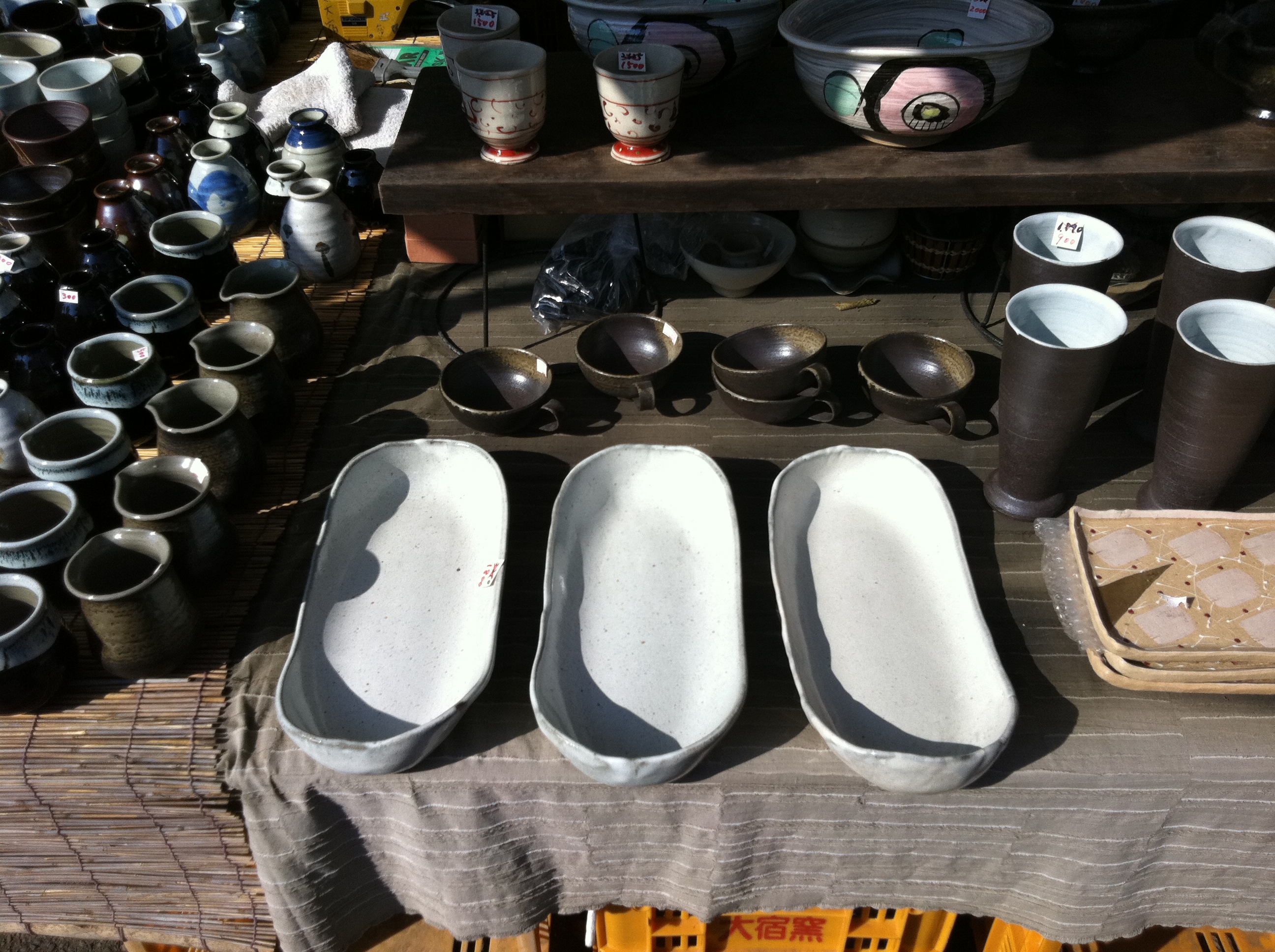
Loved the simplicity of, and so purchased, both of these, which look great with the fruit bowl.
Though I didn’t buy one, I love the utilitarian grater featured in these spouted works.
As with so many things I’ve seen in Japan, the elegant simplicity of some displays rivaled the artistry of some of the goods being sold.
Other collections for sale besides pottery included glass, incense and shoes.
Given the huge piles of rubble within, I think these warehouses may be the sites of some of the kilns which were destroyed, although they had certainly been cleaned up from last spring,
After exhausting myself among the stalls, I finally arrived at the main street, where many finer pieces of art were for sale. The glaze on this vase looks as if there are layers of mosaic tiles beneath the smooth surface. The photo doesn’t do justice to the gorgeous tones of blue, grey and green held within.
My wheelie bag was full, and I had a couple of shopping bags draped over my arms as I returned to the parking lot before heading home. I’d been true to aim – not to leave any beloveds behind – and yet, I already knew I would need to return next year.

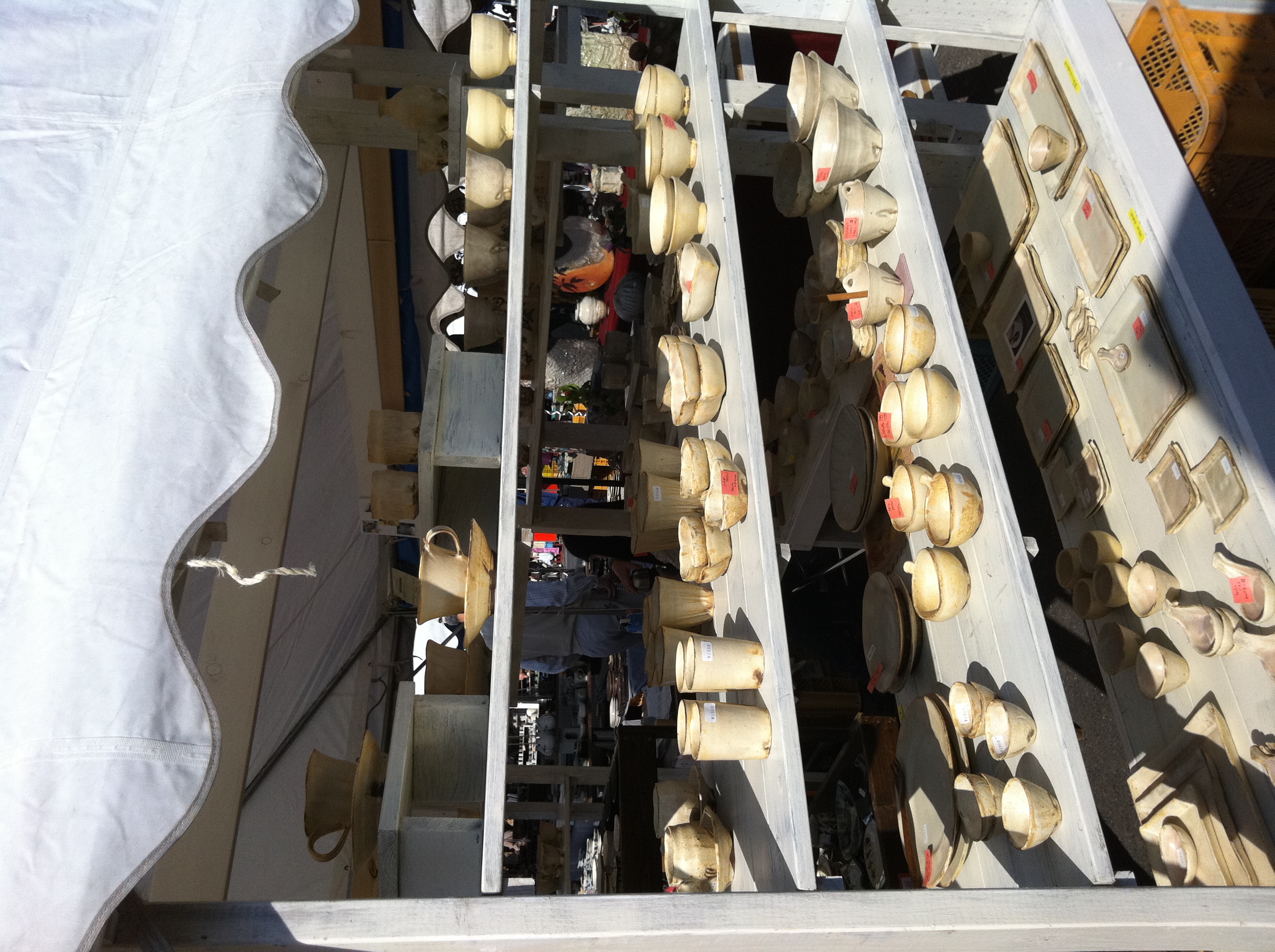
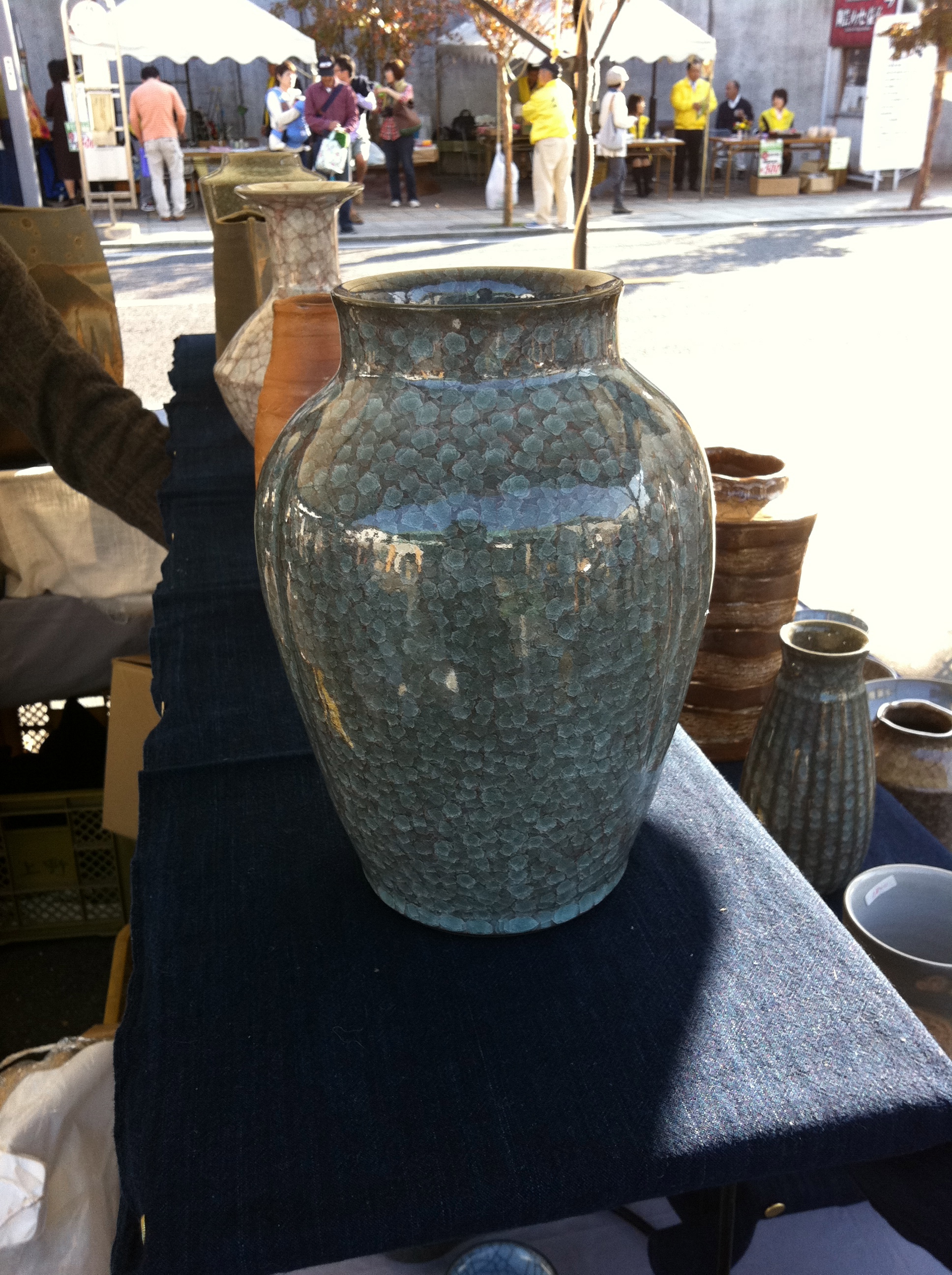

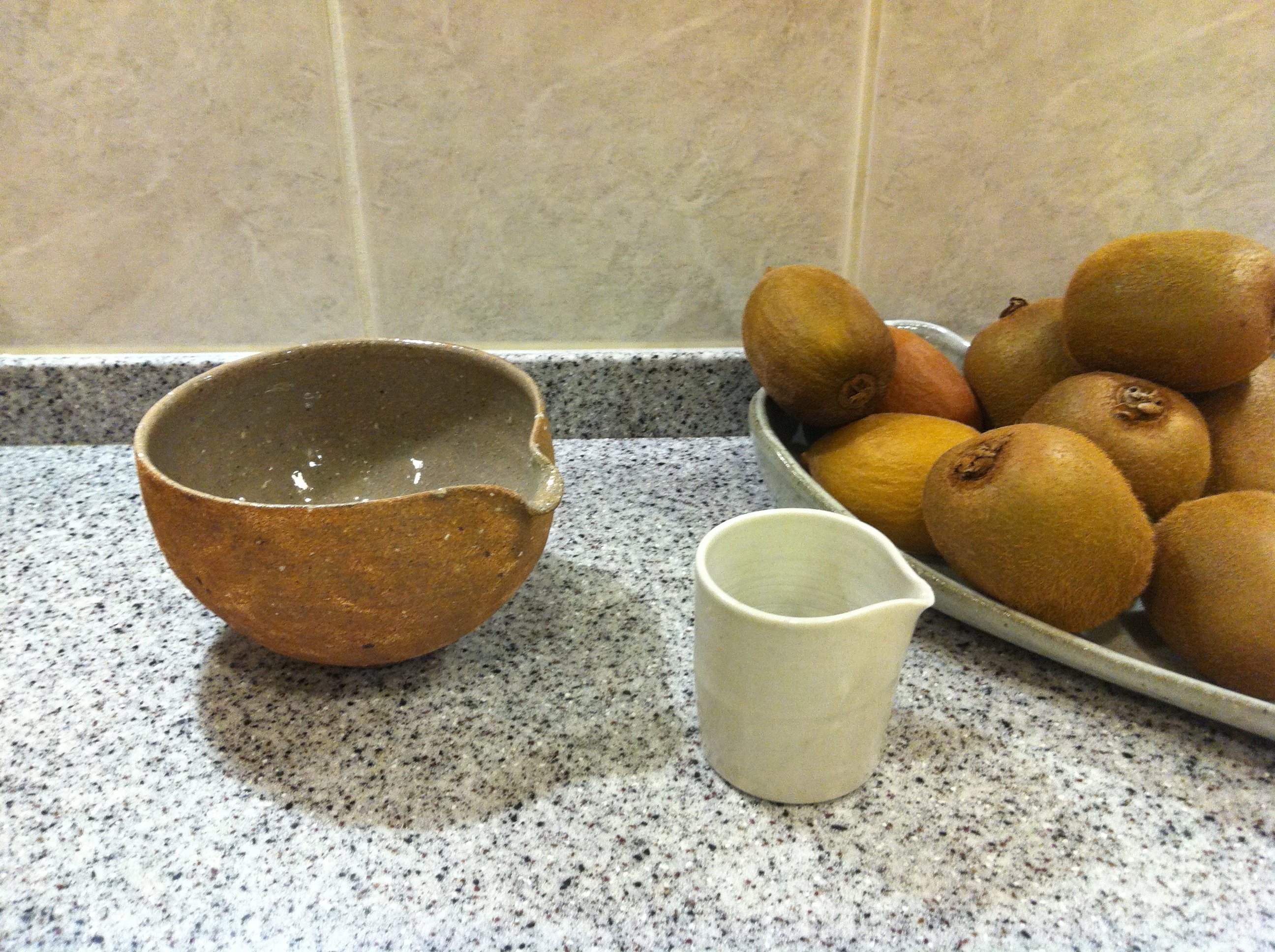
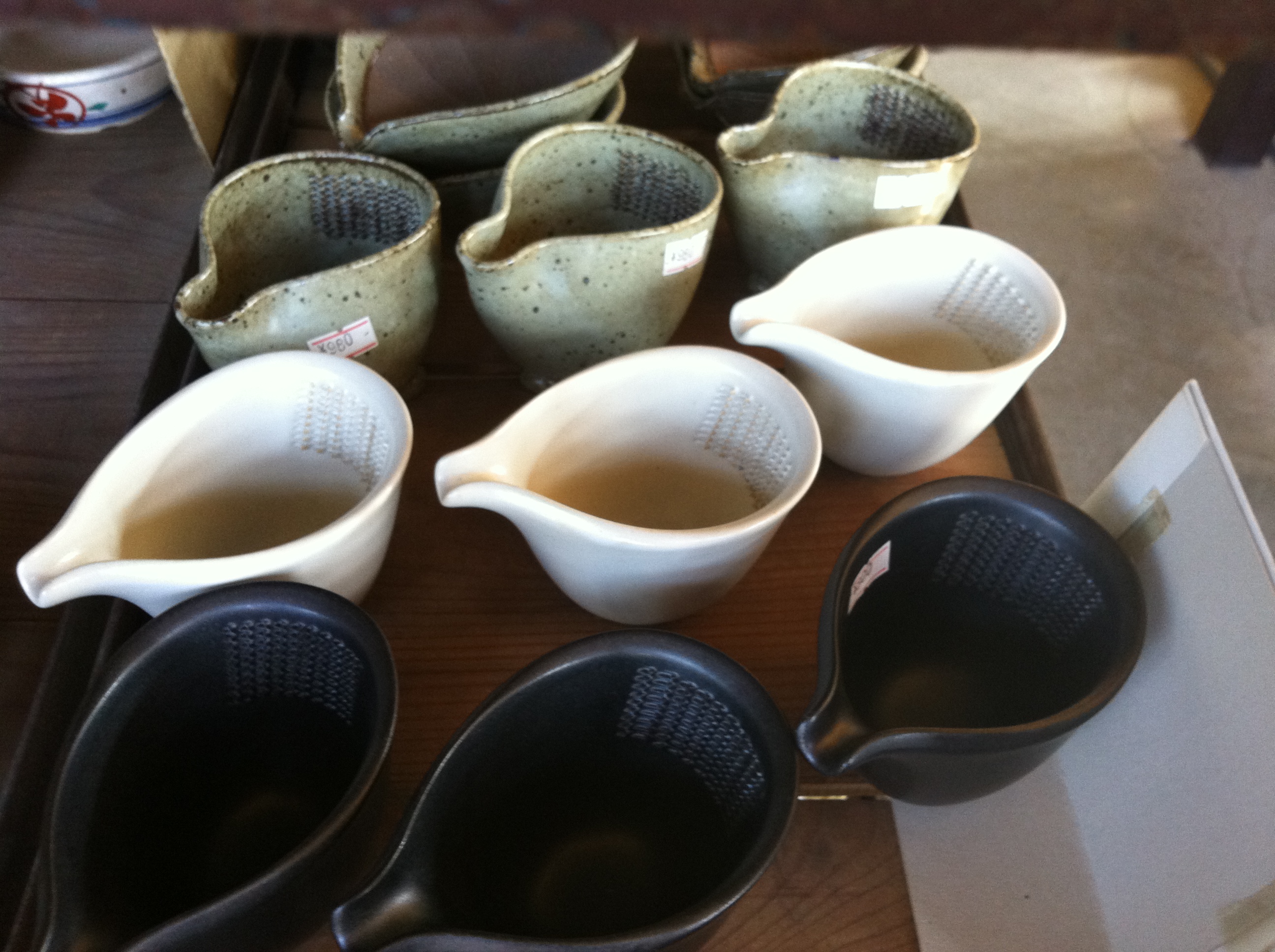
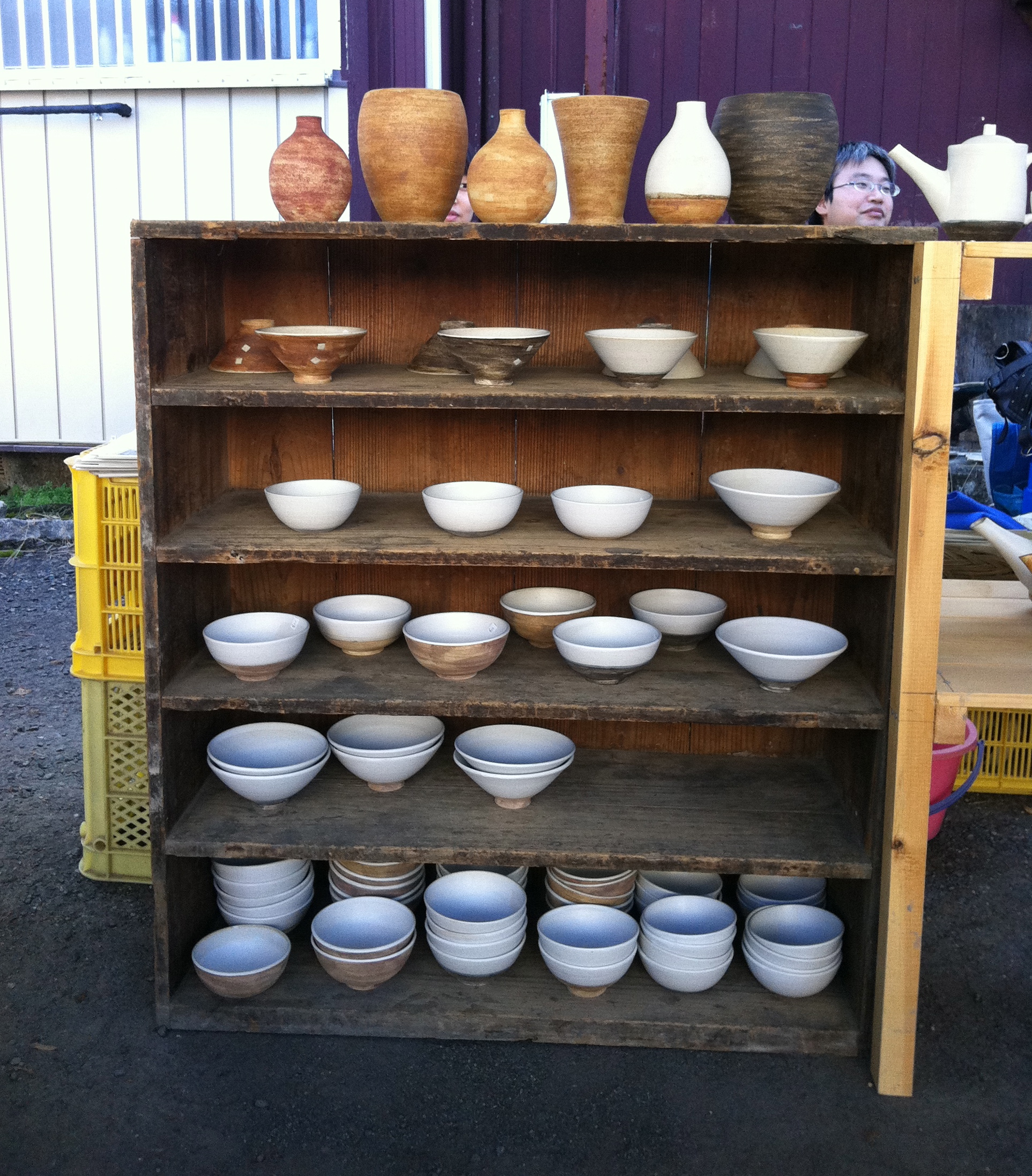
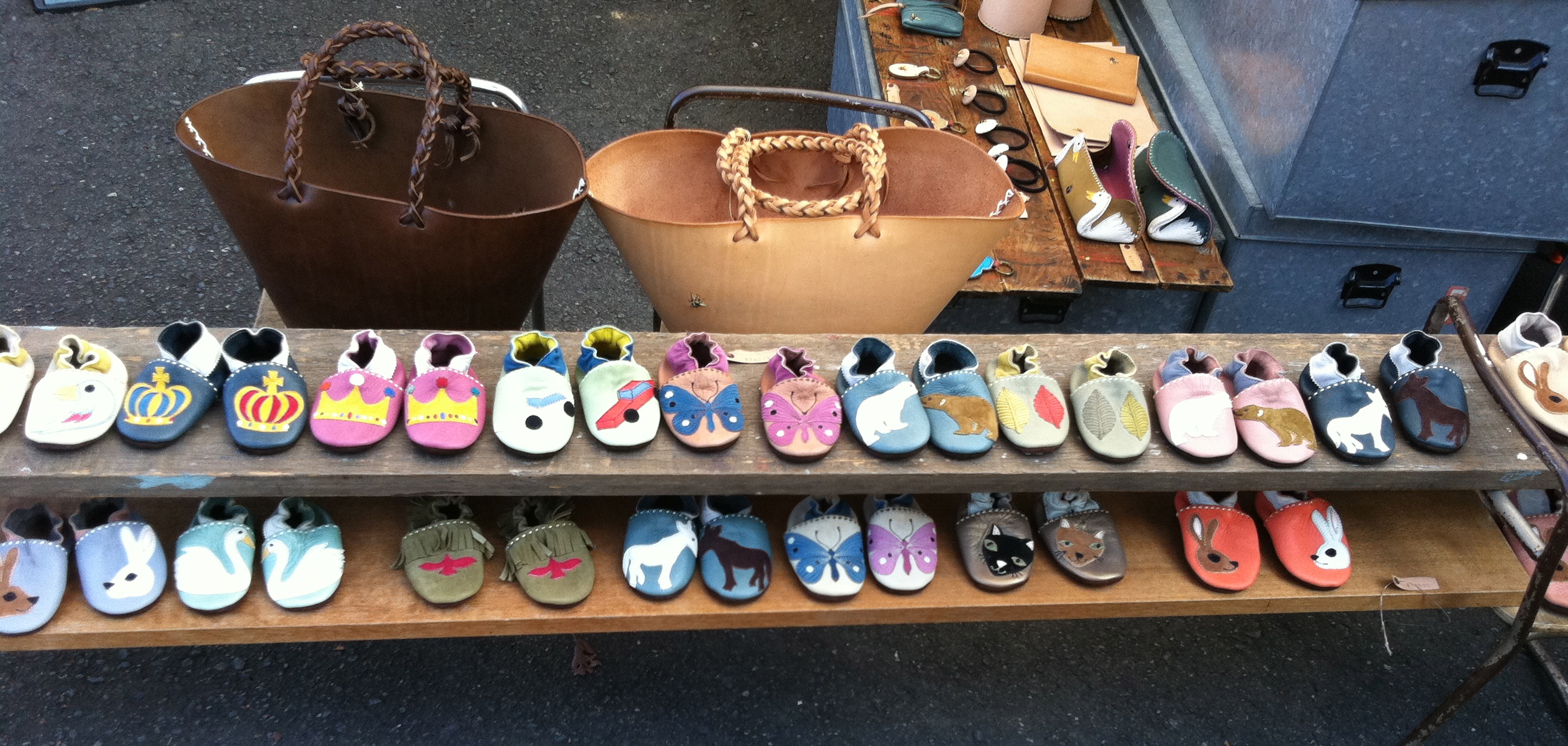
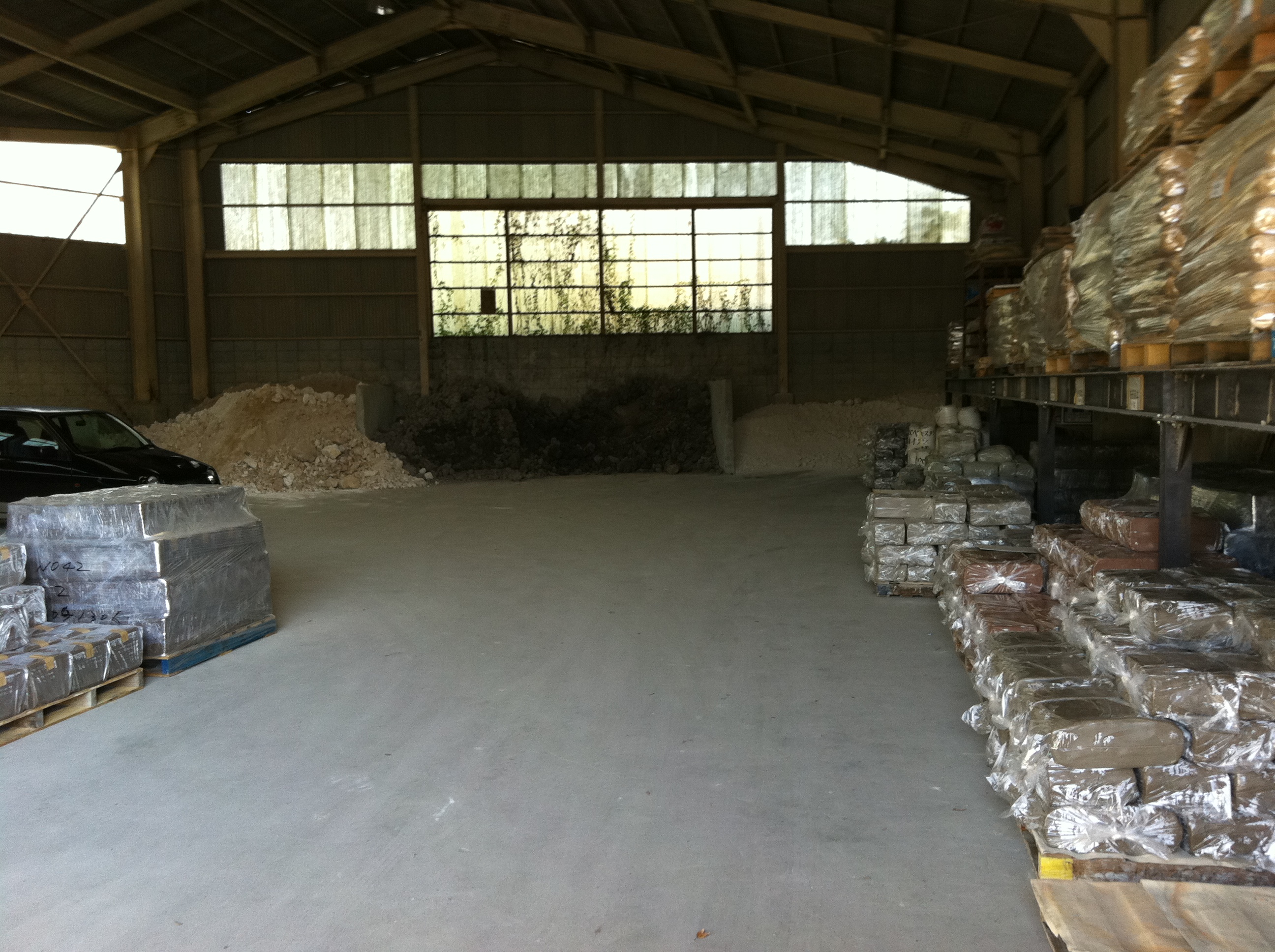
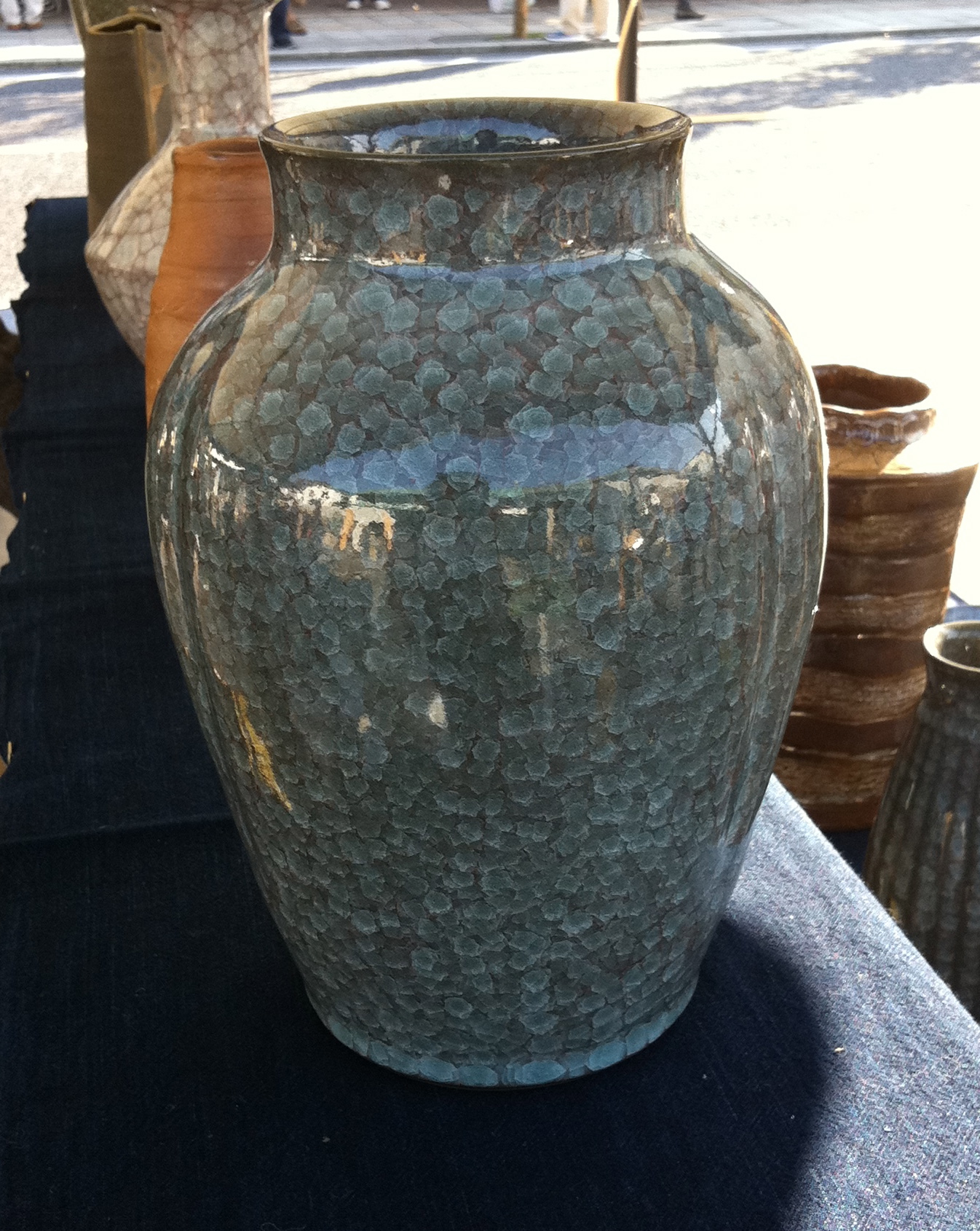
Great photos & neat finds. I never went for fear of being too overwhelmed & exhausted by it all! Does TAC still organize a day trip to pottery festival? Any idea why the one in the fall draws so many more people?
She was on the TAC tour, which is still quite popular. I think the autumn is the traditional time for the festival (foliage etc.) and that the spring one was a later addition.